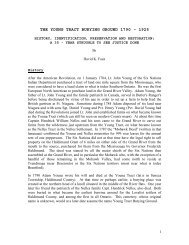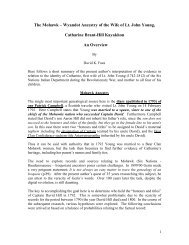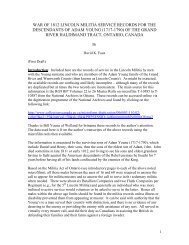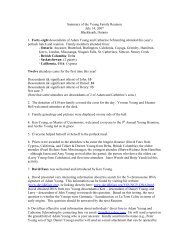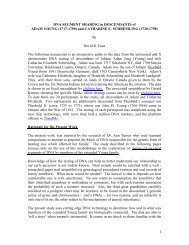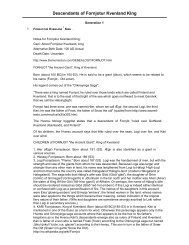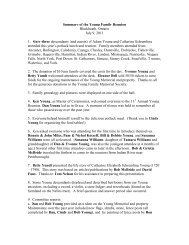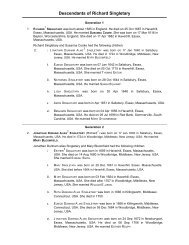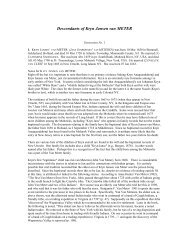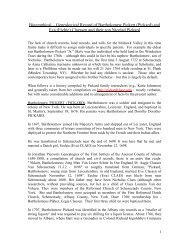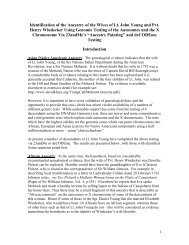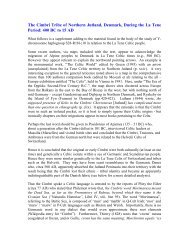Part 2 - Davidkfaux.org
Part 2 - Davidkfaux.org
Part 2 - Davidkfaux.org
You also want an ePaper? Increase the reach of your titles
YUMPU automatically turns print PDFs into web optimized ePapers that Google loves.
mention of a Gallic people (p.114). Since pots don’t “travel well” it is possible that they(or part of the tribe) were residing in this location at this early period.R-M269 percentages – Few population genetics studies have included Switzerland. Theavailable data suggests that about (50%) of the Swiss are R-M269. At some point itwould be helpful to compare the German, French and Italian – speaking cantons in termsof haplogroup stucture. Myres et al. (2007), with a Swiss sample of 90, found that 58%were R-M269. Thomas et al. (2007) explored the haplogroup structure in Ladin andGerman speaking communities in the South Tyrolean Alps and found that up to 70% ofthe former and 44% of the latter were P* (xR1a), generally meaning R-M269, comparedwith 37% of a metopolitan Italian community.R-U152 predictions – Assuming that the majority of Swiss are descendants of theHelvetii and related Celtic tribes, then it is expected that 50% or more of the R-M269 willtest U152 positive. In the above Myres et al. (2007) study 23% of R-M269 was R-U106(likely descendants of the Germanic invaders who poured into the region as the RomanEmpire began to crumble). Based on preliminary findings, it seems that there may bevery little R-P312/S116* and likely even less R-L21/S145*.35



